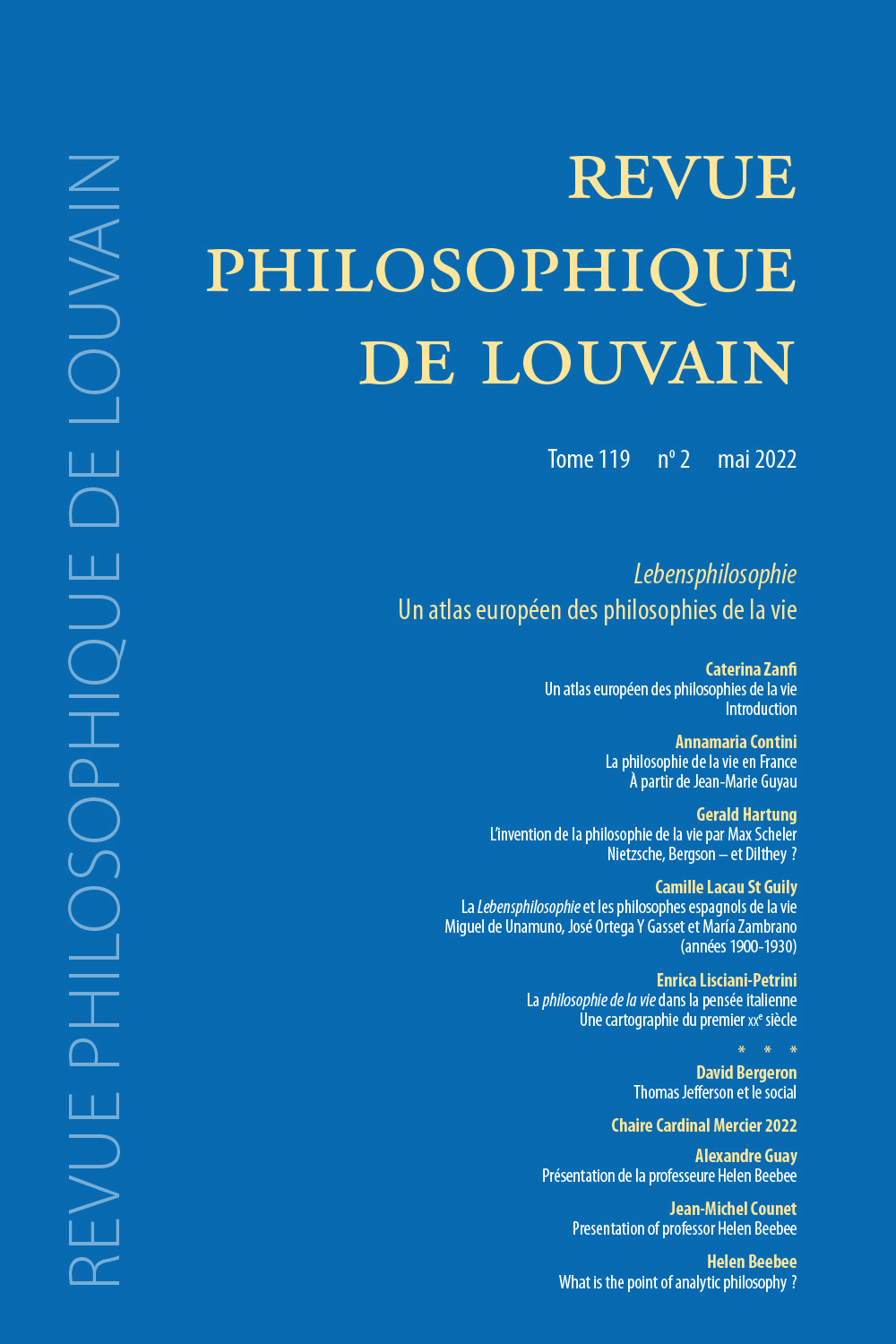 previous article in this issue previous article in this issue | next article in this issue  |

Preview first page |
Document Details : Title: De Baumgarten à Kant Subtitle: sur la beauté Author(s): PARRET, Herman Journal: Revue Philosophique de Louvain Volume: 90 Issue: 3 Date: Août 1992 Pages: 317-343 DOI: 10.2143/RPL.90.3.556179 Abstract : Alexander Baumgarten, bien que lourdement hypothéqué par l'héritage scolastique et wolffien, déplace la réflexion sur le beau de la métaphysique vers la nouvelle science appelée 'esthétique' (il publie Aesthetica en 1750). L'esthétique systématique de Baumgarten combine deux approches: celle qui consiste à reconstruire les conditions générales de la créativité esthétique, et celle qui consiste à determiner les caractéristiques générales du bel objet. Deux philosophèmes de Baumgarten ont été repris par Kant dans sa Critique de a faculté de juger: l'expérience esthétique est un jugement, et le jugement esthétique présuppose une sensibilité pour l'individuel. Il va de soi que Kant dépasse de loin Baumgarten en profondeur et en argumentation. Toutefois, c'est Baumgarten qui a créé avec précision le lieu même où la théorie kantienne du jugement esthétique a pu s'installer. Alexander Baumgarten, still very dependent on the scolastic and wolffian heritages, deplaces the thought of the beautiful from metaphysics towards a new science called 'aesthetics' (Aesthetica has been published in 1750). Baumgarten's systematic aesthetics combines two approaches: the one reconstructing the general characteristics of the beautiful object. Two philosophical theses of Baumgarten have been taken over by Kant in his Critique of Judgment: the aesthetic experience is a judgment, and the aesthetic judgment presupposes a sensitivity of the individual. Without any doubt, Kant transcends Baumgarten by his depth and argumentation. However, it is Baumgarten who created with precision the space itself where Kant's theory of the aesthetic judgment will be developed. |
|


